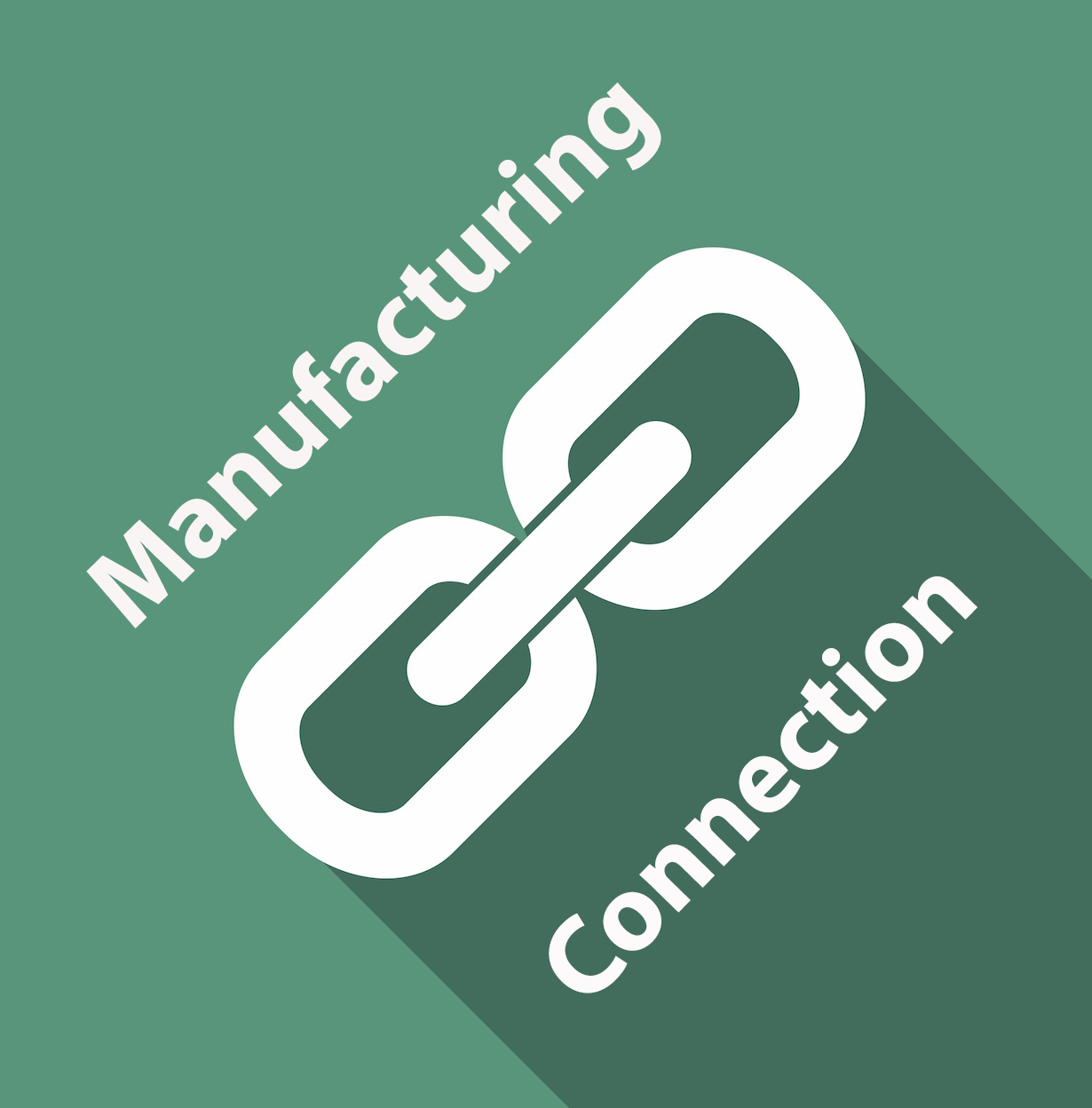
by Gary Mintchell | Apr 24, 2015 | Automation, Internet of Things, Manufacturing IT, Networking, News, Operations Management, Organizations, Standards, Technology
 News about further adoption of OPC (www.opcfoundation.org) continued to flow from the recent Hannover Fair (Messe) in Germany. Things had gone dark for a period of time from the Foundation. This has changed over the past couple of weeks as the communication technology picks up momentum.
News about further adoption of OPC (www.opcfoundation.org) continued to flow from the recent Hannover Fair (Messe) in Germany. Things had gone dark for a period of time from the Foundation. This has changed over the past couple of weeks as the communication technology picks up momentum.
The Platform Industrie 4.0 (I4.0) announced at Hannover Messe 2015 a reference architecture model for Industrie 4.0 (RAMI 4.0). RAMI 4.0 is a unified architecture model where use-cases, standards etc. for I4.0 are necessary. In RAMI 4.0 I4.0 components are defined in their structure and functioning. Thus it enables cross-company networking and integration across value-added networks. Where meaningful, RAMI 4.0 builds on existing and relevant standards.
The Platform Industrie 4.0 trade organizations BITKOM (IT), VDMA (Mechanical Engineering) and ZVEI (Electronics) together collected and analyzed necessary or relevant standards for RAMI 4.0 in technically oriented working groups. In the category “Communication Layer“ the OPC UA (IEC 62541) standard was thoroughly examined and deemed adequate for RAMI 4.0 as the one and only confirmed.
“Companies like ThyssenKrupp are implementing Industrie 4.0 today. The availability of established communication protocols is mission critical for such a timely implementation, OPC-UA is here the best example,” said Dr Achatz head of technology at ThyssenKrupp AG.
“We are proud the Platform Industrie 4.0 thoroughly analyzed OPC UA in the category “Communication Layer” and confirmed its relevance as the only standard for the reference architecture model for Industrie 4.0,” said Thomas J. Burke, President and Executive Director of the OPC Foundation. “This shows that the OPC Foundation is on the right track with our approach of secure, safe, manufacturer- and platform independent communication for heterogeneous systems by means of OPC UA to become a global data exchange standard for Industrie 4.0 and the Internet of Things.”

by Gary Mintchell | Apr 20, 2015 | Automation, Data Management, Education, Internet of Things, Leadership, Operations Management, Productivity
 I took 10 days off to go on vacation in Europe. I tried to write ahead, but ran out of time. So last week I reposted several older items.
I took 10 days off to go on vacation in Europe. I tried to write ahead, but ran out of time. So last week I reposted several older items.
We did the Danube cruise on Viking (you can see its ads on Masterpiece Mystery on PBS) from Nuremberg to Budapest–two of my favorite cities.
Three are many notable takeaways from the trip, but one thing stands out from a professional perspective. That would be workforce recruitment and training.
Every person on the ship’s staff was obviously screened well and then trained impeccably. It’s the same reason I like to stay at Marriotts. The staff is invariably friendly and trained–not only to do their jobs well but also to excel at customer service.
This contrasted markedly with the poor American Airlines guy who was managing (sort of) the queue through security at JFK. He’d do one thing, then reverse himself, then reverse again. All this in the space of 15 minutes! The queues were hopeless. Some industrial engineering training would go a long way toward adequate customer service at JFK.
Big Data and Jim Pinto
Meanwhile, I’ve finished sorting through about 1,200 emails today in addition to a couple of meetings. Catching up with work after a trip is so much fun.
Jim Pinto’s latest blog message was buried in my email folder. Turning from his recent ruminations on life, he turned to the Big Data subject.
Here’s Jim’s summary:
A revolution that compares with the impact of the Internet is changing the way that business, politics, health, education – almost everything – is being conducted. It is pervasive to the extent that everyone knows that it’s there, but no one can do anything to stop encroachment Every digital process that surrounds everybody at all times generates data: messages, updates, images posted to social networks; readings from sensors; GPS signals from cell phones. What’s revolutionary is that something can now be done with the data. Online retailers develop algorithms to predict what individual customers like, performing better every time recommendations get a response or are ignored. Political campaigns analyze large datasets to create predictions, giving data-savvy campaigns a major advantage. Big data has become the basis of competition and growth.
What with sensors everywhere, all that data must go somewhere in order to be useful. The consumer domain has been struggling with this. And it is all so debatable. Is is service or invasion of privacy for all these consumer companies to compile all that data about us? On the one hand, they hope to serve us ads and information that would be relevant to what we’re interested in. On the other, what if a nefarious agent–say the Department of Homeland Security or the local police–grabbed all that data and then trumped up charges against us?
In the manufacturing/industrial domain, ubiquitous sensors and massive amounts of data are old hat. But…are historians adequate to the tasks required by modern manufacturing methods? What do we need to learn and incorporate from the new database technologies from consumer big data? Who is working on that? This is crucial to the success of Industrial Internet of Things.
Anyway, check out Jim and debate with him–he loves that!

by Gary Mintchell | Mar 25, 2015 | Automation, Manufacturing IT, Operations Management, Technology
 During my continuous research for topics such as Industry 4.0, digital manufacturing, smart manufacturing and the industrial Internet of things, I came across this Siemens PLM software blog.
During my continuous research for topics such as Industry 4.0, digital manufacturing, smart manufacturing and the industrial Internet of things, I came across this Siemens PLM software blog.
In it, Zvi Feuer, Siemens PLM Software’s Senior Vice President, Digital Factory, Manufacturing Engineering Software, shares his perspective on “how Siemens helps companies worldwide to realize innovation in manufacturing.”
Feuer says, “I want to be able to offer our customers industry solutions which provide the means to turn any manufacturing operation into a high tech manufacturer. In order for us to sell not only the software but also usage methodologies And, in fact, to increase productivity with the customer and to help the customer deliver to his customers in a better and faster shape. This will obviously create opportunities for people, opportunities for jobs.”
Siemens executives have explained its digital manufacturing strategy to me for more than 10 years. And the vision has been remarkably consistent. The first conversations were even before the UGS acquisition that led to the Siemens PLM business.
PLM As ERP for Manufacturing
The blog refers to a white paper, PLM For Manufacturing, “If you are looking for ways to connect all domains of the design/build lifecycle, consider a manufacturing process management (MPM) solution. This provides an enterprise-scalable foundation that allows you to perform product design, while simultaneously optimizing manufacturing processes. This means that you can better manage lifecycle cost, meet launch dates and maintain product quality targets.”
That statement reflects Siemens thinking even before the acquisition. Is it possible to design not only the product but the manufacturing digitally, and then proof it all out digitally before even cutting the first steel.
“We believe that an MPM system that is part of an enterprise PLM system is the best way to move
forward. This will provide an environment that supports a flexible process plan capable of reflecting any changes to the product design or requirements. This might be called a single window for enterprise data management – a single application that supports the complete lifecyle of product data in an enterprise environment. The main idea is to provide users with one platform for all their data management needs. Teamcenter PLM software is the only comprehensive system that provides a platform in which users can conduct all their data management needs from engineering to manufacturing to execution.”
Is it sustainable?
This is a grand vision. It reads like Goldratt’s “The Goal” coming to life totally automated. But, there are inherent problems to the grand scheme. I have witnessed and otherwise seen the benefits of more and better information informing production/maintenance teams enabling better decisions and improvements. But to think that this could eventually happen without human intervention–I doubt that ever happens effectively.
The white paper also talks about complexities of manufacturing and software, then it argues that it would be better to put everything into one overarching software application. I would argue, along with my Lean friends, that this would just make for one very complex software application.
Any of us who have actually done automation know that when the application gets too complex, then it doesn’t work. It is not maintained. It is not understood. People begin developing their more simplified (and understandable) workarounds.
The vision is like most things I have witnessed over the past 40 years of applying technology. We develop something. We get benefits. We get over ambitious and build something cumbersome. People stop using it. We develop something simpler. People use it. And so on.
Digital manufacturing and Industrie 4.0? Interesting. The jury is still deliberating as to whether it is giving Germany the desired competitive edge in manufacturing.

by Gary Mintchell | Feb 18, 2015 | Automation, Commentary, News, Operations Management, Safety, Safety
 I am a conservationist.
I am a conservationist.
What that means is that I have a lifestyle of conserving and preserving. Especially nature. It doesn’t mean that I’m political. Or even anti-development.
On the other hand, I have ceased being political. Whether I’m “liberal” or “conservative” (as if anyone really knows what all falls under those labels!) bores me. Don’t care for the discussion.
But it’s a weird world. Take industrial risk management. I guess that there are many “conservationists” who do not want to build the oil pipeline known as Keystone. They are afraid of oil spills.
OK, that means one of two things–either they wish to live in a petroleum-free society or they endorse shipping massive amounts of oil across our nation via rail. I’d like to see them accomplish the former. And look at the unintended consequences of rail-based shipping, especially when we as a nation do not really care about upgrading the infrastructure.
If you study the comparative risks, oops, looks like pipelines are a better option.
One of my economics professors used to say that people never really vote their economic interests because they are voting emotions. Interesting observation think about it. Maybe the conservationists are actually achieving the opposite of their desired outcome. Wouldn’t be the first time in politics that happened. Won’t be the last.
Now, I’d never tell you to rush right out and email your congressperson. Even if they had not voted already, it would be too late. I’m in favor of the movement to require congresspersons to wear jackets like those the NASCAR drivers do–there’s a patch that shows who all their sponsors are!
But I do think that no matter your politics that you should stop and think that maybe you’re supporting an outcome that is exactly opposite of what you think you are.
It’s a good business and engineering idea, too. Maybe you’re too stuck on an idea that you’ve missed the real solution.

by Gary Mintchell | Feb 16, 2015 | Asset Performance Management, Automation, News, Operations Management, Safety
Asset management, analytics, modeling, safety—some of the significant trends highlighted at last week’s ARC Industry in Transition Forum in Orlando—all popped up at the Bentley Systems press conference session. Highlights were acquisition of C3global and its Amulet Operational Analytics, acquisition of Acute3D and its reality modeling solution, and added process safety and risk management capabilities.
Operational Analytics
Bentley Systems has acquired U.K.-based C3global, provider of web-based Amulet software for operational analytics. Bentley’s AssetWise platform, which serves configuration management, asset health monitoring, inspection, maintenance, and compliance for infrastructure assets, can now deliver additional actionable insights as asset performance management is extended, through AssetWise Amulet, for asset performance modeling. AssetWise Amulet offers unique value in applying predictive and prescriptive analytics that are easily configurable at industrial scale to leverage just-in-time data for improved operational efficiencies.
Gartner recognizes C3global as part of the industrial analytics transformation helping digital businesses (as noted in Gartner’s “Industrial Analytics Revolutionizes Big Data in the Digital Business” report [G00264728], published August 19, 2014). Among the many infrastructure owner-operators benefiting from Amulet operational analytics are water utilities, oil and gas, and power transmission grids. User organizations include Babcock, BP, Chevron, Danfoss, Emerson, MWH, National Grid, South Australian Water, and Total.
AssetWise Amulet can be readily configured to build sophisticated applications tailored to infrastructure operations needs without having to know a programming language. It bridges the gap between information technology (IT) and operational technology (OT), enabling advanced analytics to be an integral part of all aspects of the business process. Through AssetWise Amulet’s interactive and easily configurable operational dashboards, owner-operators are provided with the context they need to be confident in their decisions and are afforded an easy method of measuring and managing the outcomes.
AssetWise Amulet is designed to integrate and analyze “big data” generated by a wide range of external applications and systems – from SQL or Oracle databases to enterprise data warehouses, industrial data historians, and control systems, as well as maintenance and work order management systems. The data can be structured or unstructured and include systems data, photos, video, log books, Microsoft Excel files, event failures, scanned notes, witnessed events, and more.
Once data from the IT and OT systems has been captured and aggregated, the software applies the users’ business rules, models, and knowledge to provide an improved view and understanding of operational performance for decision support. In conjunction with AssetWise-certified integrations to SAP EAM, IBM Maximo, and Oracle eAM, AssetWise Amulet will help drive the right actions at the right time, reducing operational risks and improving operational efficiency.
Reality Modeling
Bentley Systems also announced that it has acquired France-based Acute3D, provider of Smart3DCapture software for reality modeling. Through reality modeling, observations of existing conditions are processed into representations for contextual alignment within design modeling and construction modeling environments. Rapid technology advancements in scanning and photography – and especially the burgeoning application of unmanned aerial vehicles (UAVs) for these purposes – are making the capture of such observations broadly and continuously affordable in sustaining infrastructure.
Acute3D software automates the generation of high-resolution, fully-3D representations from digital photographs taken with any camera, whether highly specialized or embedded in a smartphone. Scalable from site to city, and with precision limited only by the quantity and quality of photography, Acute3D technology can assure that existing conditions are contemporaneously considered throughout the architecture, engineering, construction, and operations of any infrastructure asset. Now that photo sequences from UAVs are likely to become the most feasible source for surveying, construction monitoring, and inspection workflows, Acute3D’s industrial-level accuracy and unlimited scalability are making it a preferred technology for UAV manufacturers and professionals around the world.
Process Safety and Risk Management
AssetWise APM V7.3 the enhanced version of Bentley’s asset performance management (APM) offering – an all-in-one analysis and information management software platform for asset reliability and asset integrity – now also advances process safety.
Alan Kiraly, Bentley senior vice president, server products, said, “Our AssetWise APM V7.3 meets the demanding requirements of reliability, integrity, safety, and maintenance managers and engineers in industries ranging from oil and gas, petrochemical, and mining and metals to power generation and other utilities. The software ensures assets are safe and reliable and that they are inspected and maintained to reduce or eliminate risk. Users further benefit from the elimination of unexpected downtime, increased asset availability and utilization, reduced maintenance costs, and support for regulations and safety standards, including ISA 84, IEC 61511, IEC 61508, and IEC 61882.”
AssetWise APM V7.3’s new process safety features help users manage the integrity of safety systems and hazardous processes, thereby preventing failures and catastrophic incidents and keeping people, assets, and the environment safer. Capabilities include safety instrumented function (SIF) analysis, safety instrumented systems (SIS), safety integrity level (SIL) and safety provisions, overrides, and incidents. AssetWise APM V7.3 also provides version control and approval, the analysis of loss of containment scenarios, and the identification and assessment of risks at the system level, as well as for related assets (risk matrix).

 News about further adoption of OPC (www.opcfoundation.org) continued to flow from the recent Hannover Fair (Messe) in Germany. Things had gone dark for a period of time from the Foundation. This has changed over the past couple of weeks as the communication technology picks up momentum.
News about further adoption of OPC (www.opcfoundation.org) continued to flow from the recent Hannover Fair (Messe) in Germany. Things had gone dark for a period of time from the Foundation. This has changed over the past couple of weeks as the communication technology picks up momentum.











